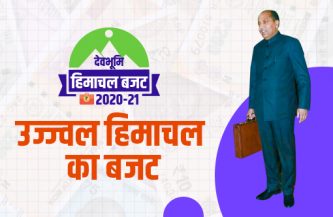Gati Shakti: A major leap in governance- By Jyotiraditya Scindia

The launch of the Gati Shakti master plan is a momentous occasion for an Atmanirbhar Bharat in the making. The project is yet another leaf from Prime Minister (PM) Narendra Modi’s inclusive development repertoire, which has brought about paradigm shifts in governance and age-old frameworks across the spectrum. Right from reforms such as “One Nation One Market” to “One Sun, One World, One Grid” to “One Nation, One Ration Card”, in one scheme after another, PM Modi has sought to bind fragmented systems together with a unified, all-encompassing approach.
The Gati Shakti vision will do just as its name suggests, i.e., lend more power and speed to projects under the $1.5-trillion National Infrastructure Pipeline by sharing resources and developing synergies towards building a more harmonized infrastructure. It will ensure last-mile connectivity to economic zones in a definite timeframe. The aim is to ultimately improve India’s productive capacity and global competitiveness with regard to manufacturing in India.
Here’s why its timing matters. The pandemic has dealt a body blow to targets across ministries, putting a spanner in our future growth plans. Given that our ambitious mission of a $5-trillion economy stands undeterred, it is fitting for India to not just build new supply-side capacities that can set the wheels of growth in motion, but also build them in the most optimal manner.
To have all utility and infrastructure planning under an umbrella framework is an unprecedented and complex task. For a long time, India’s infrastructure sector was marred by interministerial delays, multiple layers of stakeholders, and the culture of working in silos. This often led to confounded decision-making, time and cost overruns, and thus, a staggered pace for infrastructure-led growth.
For example, in the execution of airport projects, especially those in the hilly areas, coordinated planning is quintessential since several factors have to be taken into consideration — hundreds of crossings across power lines, pipelines and water bodies.
Naturally, an initiative to consolidate infrastructure projects in specific corridors will help various ministries plan projects side by side without getting entangled in cumbersome approval processes.
In the same vein, the geographic information system (GIS)-enabled digital platform under Gati Shakti will prove to be a useful treasure trove of information — including a region’s topography, satellite images, physical features, maps of existing facilities and so on — for ministries, thus, helping them save on funds and time for approvals.
With Gati Shakti, India will also get its foot in the door to build an integrated, harmonised transportation and logistics grid. Currently, logistics and supply chain costs account for 12% to 13% of the Gross Domestic Product (GDP), compared to the global average of 8%. An excessive dependence on transportation by road and the under-utilization of waterways, air and rail networks has also ballooned costs for the supply chain industry. Supply chain inefficiencies add to product costs, and thus, run the risk of making our exports uncompetitive vis-à-vis other international export players.
A multimodal transportation network will not only provide manufacturers faster access to domestic and international markets, but will have a multiplier effect on the economy too. It will ensure that infrastructure investments flowing into the country are better utilised by our economic hubs, and open the doors for new future economic zones. Thus, the eventual pay-off of a ₹100-lakh crore Gati Shakti project will be inestimably large, kicking in a virtuous cycle of investments, large employment opportunities, aggregate demand, and thus economic growth.
Besides, the concerted approach will also help increase India’s air freight share, which has seen a one-of-a-kind upswing since last year. India’s share in the international cargo business was worth ₹1,686 crore in 2019-20, which rose to ₹2,644 crore in 2020-21 (a 57% increase).
However, we have only touched the tip of the iceberg. A large part of our freight comprises bulk material which could be more economically served by air. Many centres such as Dubai are making use of concepts like sea-air, where cargo is initially transported by sea freight, and later by air freight. This combination is proven to have led to significant savings in transit time and costs. Thus, Gati Shakti could pave the way for a culture of multimodality, where sea, road, rail and air transport modes do not compete with each other, but rather, complement each other.
The first steps in the direction of a vision as ambitious as this one are always challenging. Clearly, the government’s ability to take quick action exhibited by the roll out of a master plan for the project in less than two months of its announcement on August 15, underscores the seriousness of its intent to undertake reforms. It is due to these very reforms, undertaken under the stewardship of PM Modi, that India has risen to become a favoured destination for investments. The Gati Shakti vision is yet another important step that will form the basis of the PM’s vision of “Amrut Kaal”— the 25-year period till India celebrates 100 years of its Independence — a period that will see India return to its golden age.
Jyotiraditya Scindia is the Union minister for civil aviation and a senior leader of the Bharatiya Janata Party [The views expressed are personal]
[This was first published in Hindustan Times]





